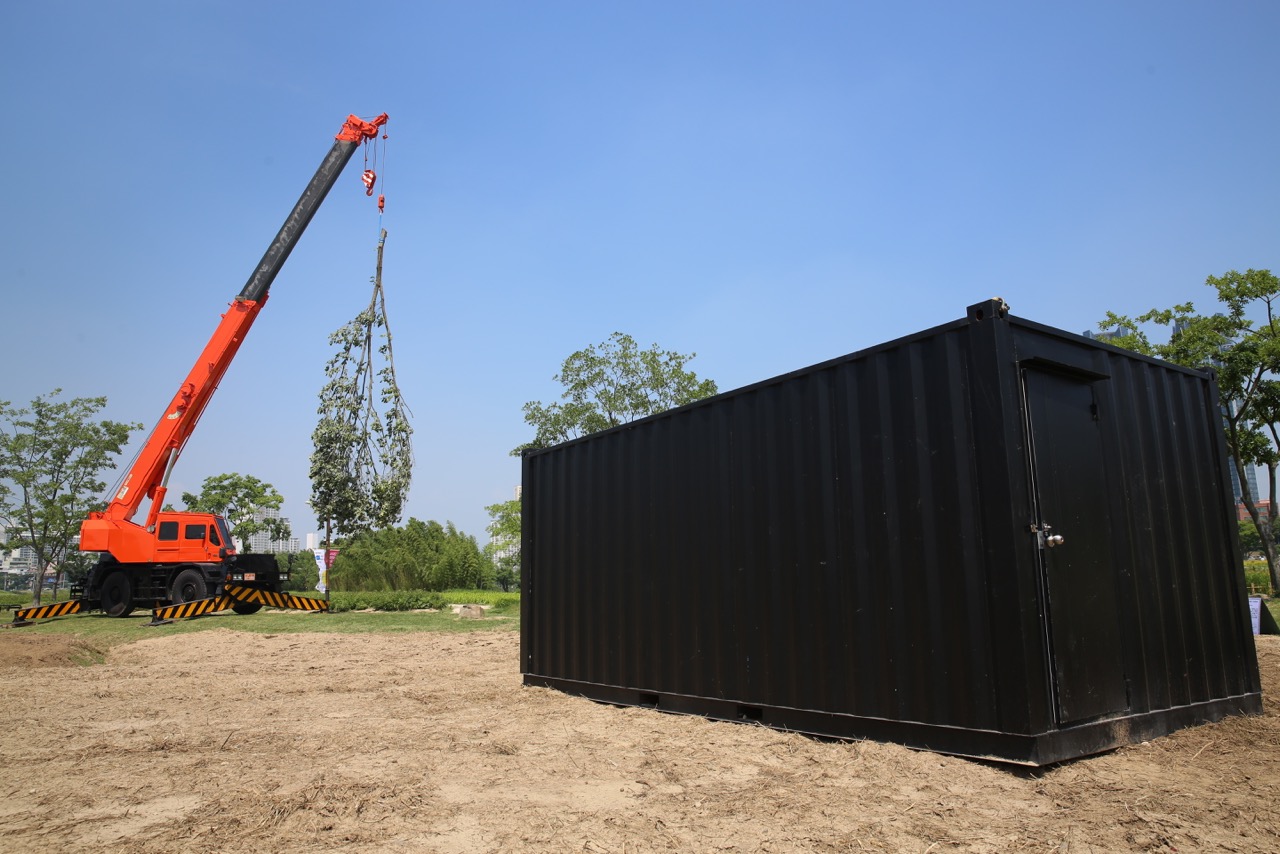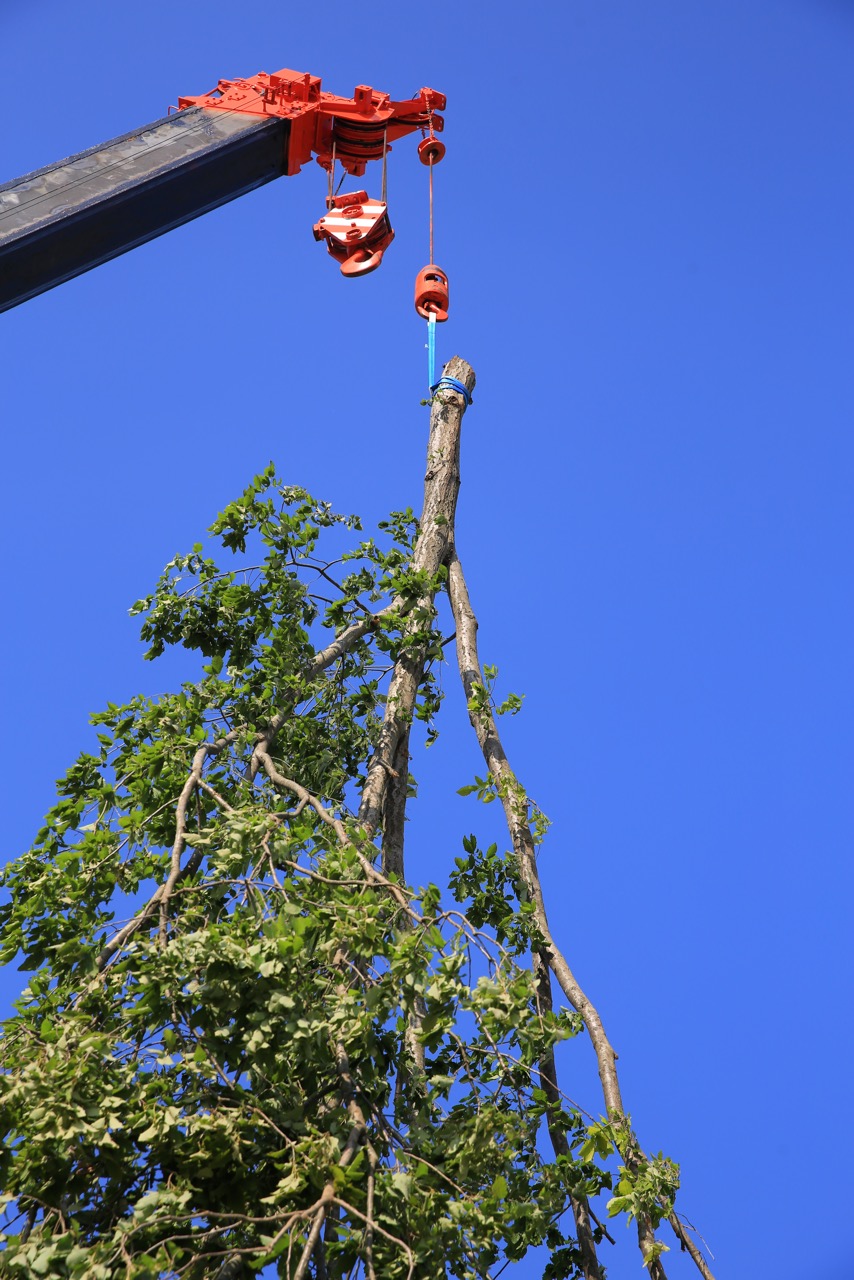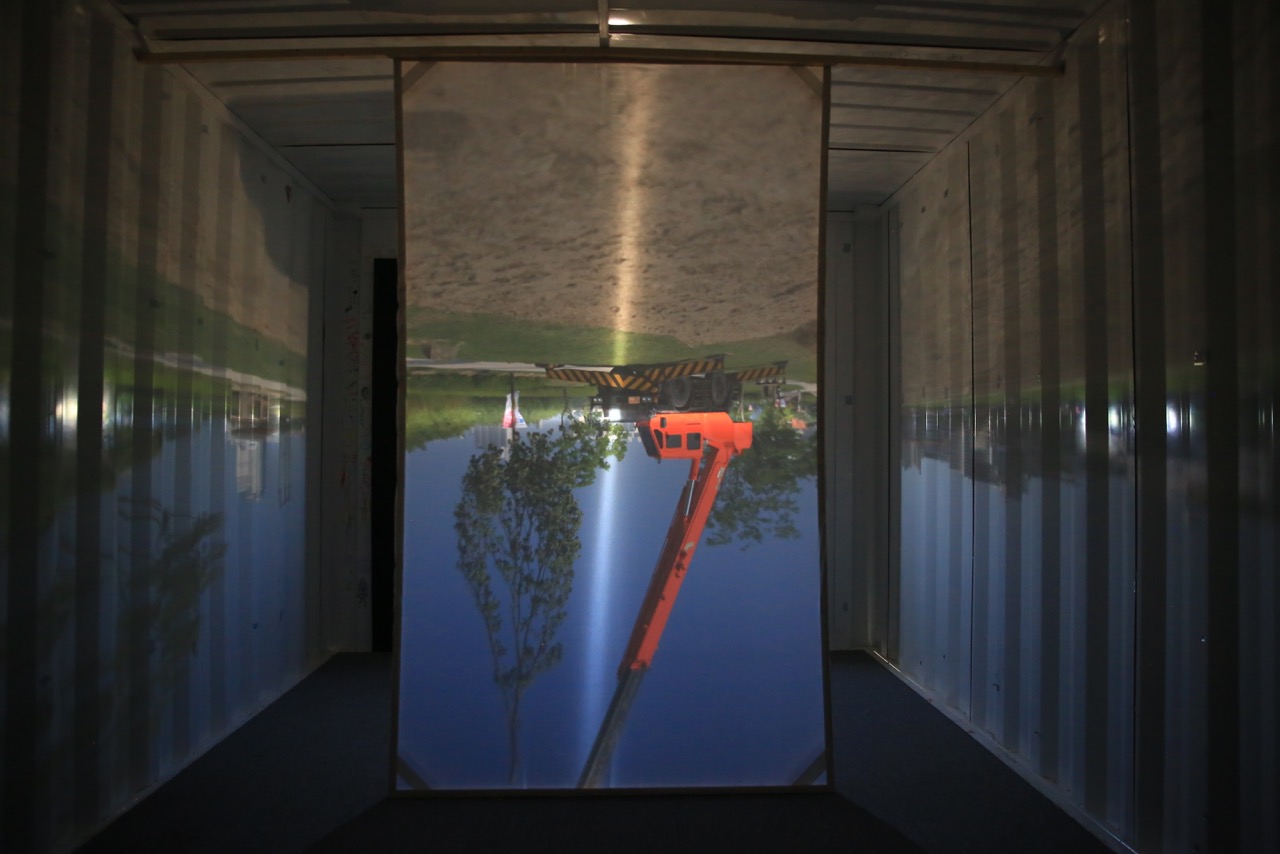The Photograph: Suspended Tree
Ulsan Metropolitan City, Korea, 2016.




“Prepared for the tenth annual Taehwa River Eco Art Festival in the Republic of Korea in the summer of 2016, The Photograph: Suspended Tree combines Wright’s expertise with the camera obscura and a viewer’s sense of what is correct in a landscape image with a deracinated tree. Visually stunning, the work reinforces the widespread respect for trees in art. Yet like all inversions accomplished with the camera obscura, the image is also somewhat disconcerting. Displaying uprooted trees is a potent and controversial practice. The highly specific context in which Wright placed this work further articulates this trope. The Photograph: Suspended Tree was temporarily sited near the Hyundai Motors car-assembly plant in Ulsan, South Korea, the largest such factory in the world and adjacent to an equally massive container port from which millions of cars are shipped annually. It is an industrial site whose size and complexity make it a hyperobject in Timothy Morton’s terms. Hyundai also manages a forest near the precinct, and it is from here that Wright sourced a large tree that he then suspended upside down from an industrial crane. Close to the tree is a shipping container converted into a camera obscura. Wright supplied a hanging screen inside the container to receive the image of the inverted tree. The outside tree is upside down, “unnatural” in the extreme. Inside the camera obscura, however, it is as if we had journeyed inside our own heads to enjoy a “live” film of a tree that is (impossibly) both suspended and, when we look to the bottom of the interior frame as we naturally do, seems to be growing from the ground in the expected manner. Like Eliasson, Wright is careful to show us how he made the image—the crane is visible both outside and inside—and it is here that some of the visual and conceptual pleasure of the work resides. Wright reports that he wanted “simply to make it work as a conceptual proposition—at minimum viewers would note that there was an upside-down/rightside-up reversal, and being able to see the crane in the image became an important reference point to cue people. The artificial horizon inside the container—the bottom edge of the screen—became the de facto reference point. (…)
One inspiration for The Photograph: Suspended Tree was a visit Wright (like Morell) made to Lacock Abbey, to the room from which Fox Talbot had photographed a large tree and surrounding buildings in early experiments with his technique. Why does Wright instead insist on the experience of the moving image? In manipulating the tree and landscape to fit his photographic device instead of (more typically) using a camera to take a picture of an object or industrial commodity, or even taking a still photograph of the camera obscura’s projection, Wright emphasizes the profound difference between image making as a creative exercise and its much more common commercial deployment. In one, the camera conforms to what it pictures; in the other, the object that generates the image conforms to the technology so that the camera’s activities are emphasized. Put otherwise, just as the container turned camera obscura inverts both image and a viewer’s expectations, so too it constructs a composition inside the box that insists on the conditions of viewing and image making rather than on a result, an image as commodity in the way that cars are products. Wright’s ecological point is to juxtapose the relentlessly practical industrial site with the ephemerality of his image of the tree, to contrast inside with outside and aesthetic expectations with those of industrialization and the commodification of nature.”
Quoted from Landscape into Eco Art, Articulations of Nature Since the ’60s, by Mark Cheetham
